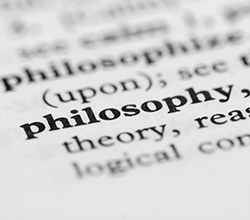Who was Ayn Rand? What kind of person did it take to create the fictional heroes of Atlas Shrugged and The Fountainhead and to develop a new philosophy of reason? This documentary-style course traces Rand’s life (1905 – 1982) from the perspective of her goal of becoming a writer. Photographs, film clips and audio of Rand’s own personal recollections enliven this narrative of her prolific career.
What is philosophy — and how is it relevant to my life? Ayn Rand answered these questions in her address to the senior class of the United States Military Academy at West Point in 1974. Rand challenges the idea that philosophy belongs only in the ivory tower. Instead she argues that, whether we realize it or not, we all hold and act on philosophic ideas — and philosophy is a crucial, practical need of human life. This illustrated audio lecture is a great starting point for those new to philosophy or to Rand’s ideas.
What motivates a creative thinker? Is it a selfless desire to benefit mankind? A hunger for fame, fortune and accolades? The need to prove superiority? . . . Or is it a self-sufficient drive to pursue a creative vision, independent of others’ needs or opinions? Ayn Rand’s answer can be found in her portrayal of Howard Roark, an innovative architect who, as she puts it, “struggles for the integrity of his creative work against every form of social opposition.” The Fountainhead is Rand’s tribute to the independent American spirit of individualism.
